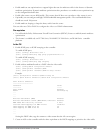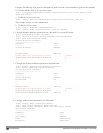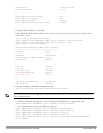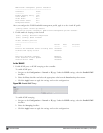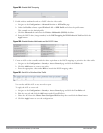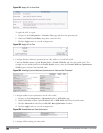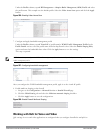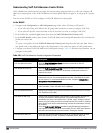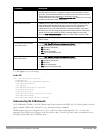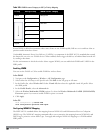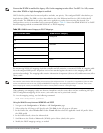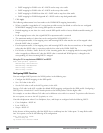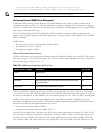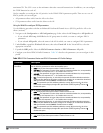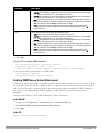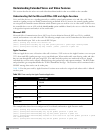
Parameter Description
disconnect extra call feature is enabled, the system monitors the number of active
voice calls, and if the defined threshold is reached, any new calls are disconnected.
The AP denies association requests from a device that is on call.
To enable this feature, select the VoIP Disconnect Extra Call checkbox. You also need
to enable call admission control in this profile.
VOIP TSPEC Enforcement A WMM client can send a Traffic Specification (TSPEC) signaling request to the AP
before sending traffic of a specific AC type, such as voice. You can configure the
controller so that the TSPEC signaling request from a client is ignored if the
underlying voice call is not active; this feature is disabled by default. If you enable
this feature, you can also configure the time duration within which the station should
start the voice call after sending the TSPEC request (the default is one second).
Select the VoIP TSPEC Enforcement checkbox to validate TSPEC requests for CAC.
VOIP TSPEC Enforcement Period Select the maximum time, in seconds, for the station to start the call after the
TSPEC request.
VoIP Drop SIP Invite and send
status code (client)
Click the VoIP Drop SIP Invite and send status code (client) drop-down list and select
one of the following status codes to be sent back to the client:
l 480: Temporary Unavailable
l 486: Busy Here
l 503: Service Unavailable
l none: Don't send SIP status code
VoIP Drop SIP Invite and send
status code (server)
Click the VoIP Drop SIP Invite and send status code (client)drop-down list and select
one of the following status codes to be sent back to the server:
l 480: Temporary Unavailable
l 486: Busy Here
l 503: Ser vice Unavailable
l none: Don't send SIP status code
5. Click Apply to save your settings.
In the CLI
wlan voip-cac-profile <profile>
bandwidth-cac
bandwidth-capacity <bandwidth-capacity>
call-admission-control
call-capacity
call-handoff-reservation <percent>
disconnect-extra-call
send-sip-100-trying
send-sip-status-code client|server <code>
wmm-tspec-enforcement
wmm-tspec-enforcement-period <seconds>
Understanding Wi-Fi Multimedia
Wi-Fi Multimedia (WMM), is a Wi-Fi Alliance specification based on the IEEE 802.11e wireless Quality of Service
(QoS) standard. WMM works with 802.11a, b, g, and n physical layer standards.
WMM supports four access categories (ACs): voice, video, best effort, and background. Table 300 shows the
mapping of the WMM access categories to 802.1p priority values. The 802.1p priority value is contained in a two-
byte QoS control field in the WMM data frame.
DellPowerConnectW-SeriesArubaOS6.2 | User Guide Voiceand Video | 696



